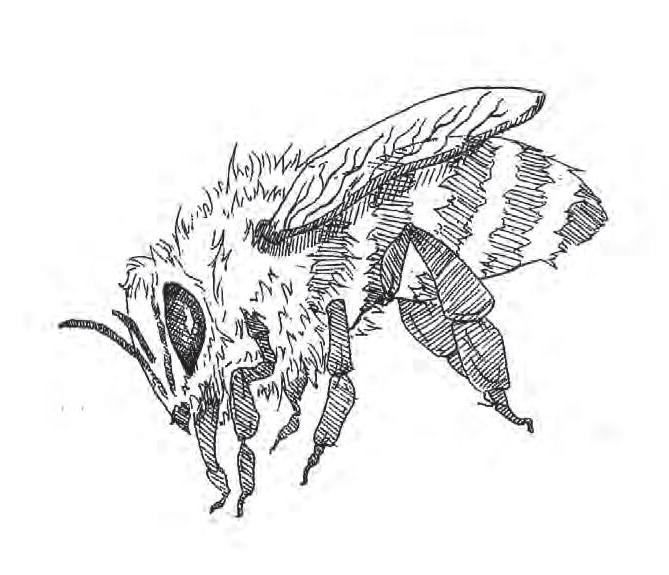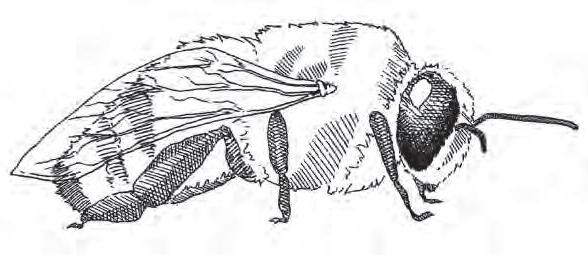
2 minute read
Bees
ITALIAN HONEYBEE
4–6. Apis mellifera ligustica, commonly known as the Italian honeybee, is a species of insect in the bee family (Apidae) that was introduced to the United States in 1859. It is a subspecies of the western honeybee, or European honeybee (Apis mellifera), and has become the preferred bee stock in the US. It has a banded, brown and yellow abdomen; is typically either leather, golden, or very pale yellow in appearance; and has a smaller body and shorter overhairs than other bee species. It is a prolific comb builder and is known for its white honey cappings. Very gentle and clean, it is less inclined to swarm than other bee species and has a greater resistance to disease. It is known for its extended period of brood rearing.
Advertisement
DRONE
4. The product of an unfertilized egg, a drone is a male bee. Unlike the female worker bees, drones do not have stingers. They do not gather nectar and pollen or participate in other worker bee activities. A drone’s primary role is to mate with a fertile queen. A drone’s eyes are twice the size of the eyes of worker bees and queens, and its body is also larger than the worker bee’s, although usually smaller than the queen and with a stouter abdomen. Although heavy bodied, the drone must be able to fly fast enough to accompany the queen in flight for mating purposes. After mating, the drone’s reproductive organs detach, resulting in death.
4.
QUEEN
5. The queen bee is an adult female bee whose sole function is to reproduce. A well-mated, well-fed queen can lay approximately 1,500 eggs per day. She is usually the mother of most, if not all, the bees in her hive. The queen is continuously surrounded by worker bees who meet her every need, bringing her food and disposing of her waste, among other activities. Unlike the worker bees, the queen’s stinger is not barbed, allowing her to sting repeatedly without dying. Queen bees are developed from larvae that are fed a special diet of royal jelly, a protein-rich secretion from glands on the heads of young worker bees, in order to become sexually mature. The larvae develop in queen cells that are appended to the comb, emerging as virgin queen bees just prior to or following a swarm, when the old queen relocates with a portion of the hive. Virgin queen bees will fight to the death for control of the remaining hive and must mate quickly to establish control.
5.
WORKER
6. Developed from a fertilized egg, the worker bee is a female bee that lacks the full reproductive capacity of the queen bee. The worker bees are responsible for most of the hive’s activities—they build the comb from wax extruded from glands under their abdomen; forage for nectar and pollen; attend the queen; clean, guard, and cool the hive; and nurse larvae, among other duties. The queen’s special diet of royal jelly is secreted from glands on the heads of young worker bees. In most common bee species, worker bees are infertile and do not reproduce; some worker bees can lay eggs but will only produce drones. Worker bees have barbed stingers that detach from the body after stinging, resulting in death.

6.











